Looks be damned: a Type II adventure review of the simply effective Bar Mitts
Neoprene booties but for your hands, Bar Mitts are a cure for the bitter cold

The Bar Mitts are a simple yet highly effective solution for cold hands in wintery conditions. Aesthetics are a small price to pay for warm hands.
-
+
Easy to install and remove
-
+
Water and wind proof material
-
+
Simply effective
-
-
Aesthetics
-
-
Some restriction in hand positioning
You can trust Cycling Weekly.

I’d seen Bar Mitts, sometimes also called "pogies", on commuter and fat bikes for years — those odd-looking black neoprene sacks that take up most of your bars. But I take back any side-eyeing I’ve ever done because they are indeed incredibly effective and I have now become a "pogie" user.
In the thrall of global climate change, winters here in the Pacific Northwest have become increasingly more severe. Sure we were always used to a fair bit of rain in the winter but freezing temperatures and snow are becoming an increasingly common occurrence. After getting caught out by a low snow line on a recent gravel ride —and crying in my car afterwards as the fingers painfully came back to life—, I turned to Bar Mitts to see how these compared to the best winter cycling gloves...
Bar Mitts: construction
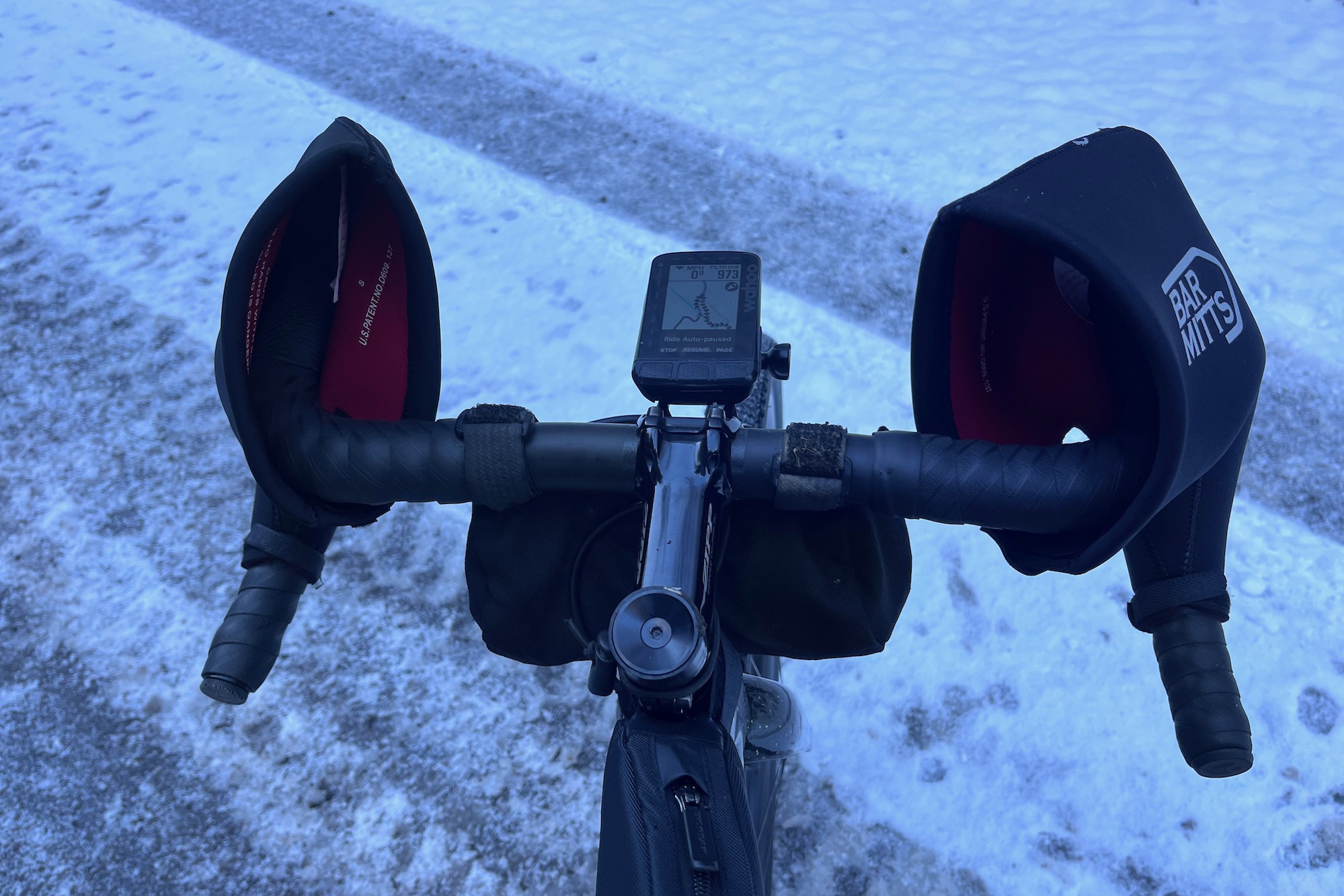
Polychloroprene, more commonly called “neoprene”, has long been the star of wetsuits, waders and cycling booties thanks to its excellent waterproof and insulating properties.
Neooprene gloves are not uncommon in water sports or hang gliding but in my experience with them, the dexterity was limited and the close-celled foam that makes the material waterproof also prevents ventilation, making them entirely too sweaty for cycling use.
The Bar Mitts, however, are more like neoprene pockets that fold over and enclose your brake levers and hoods, close around the bar using velcro yet keep an opening for easy hand insertion and removal.
- Made of waterproof, 5mm thick neoprene with nylon lamination inside and outside
- The mitts stay open and stiff allowing for easy access
- Mitts feature reflective material on seam and logo for visibility
- There are separate models available for internally and externally routed cables
- There are even specific models available even for bullhorn bars, flat, mustache, townie or butterfly bars
- Most models have various sizes as well
- MSRP: $74.95 USD
The ride
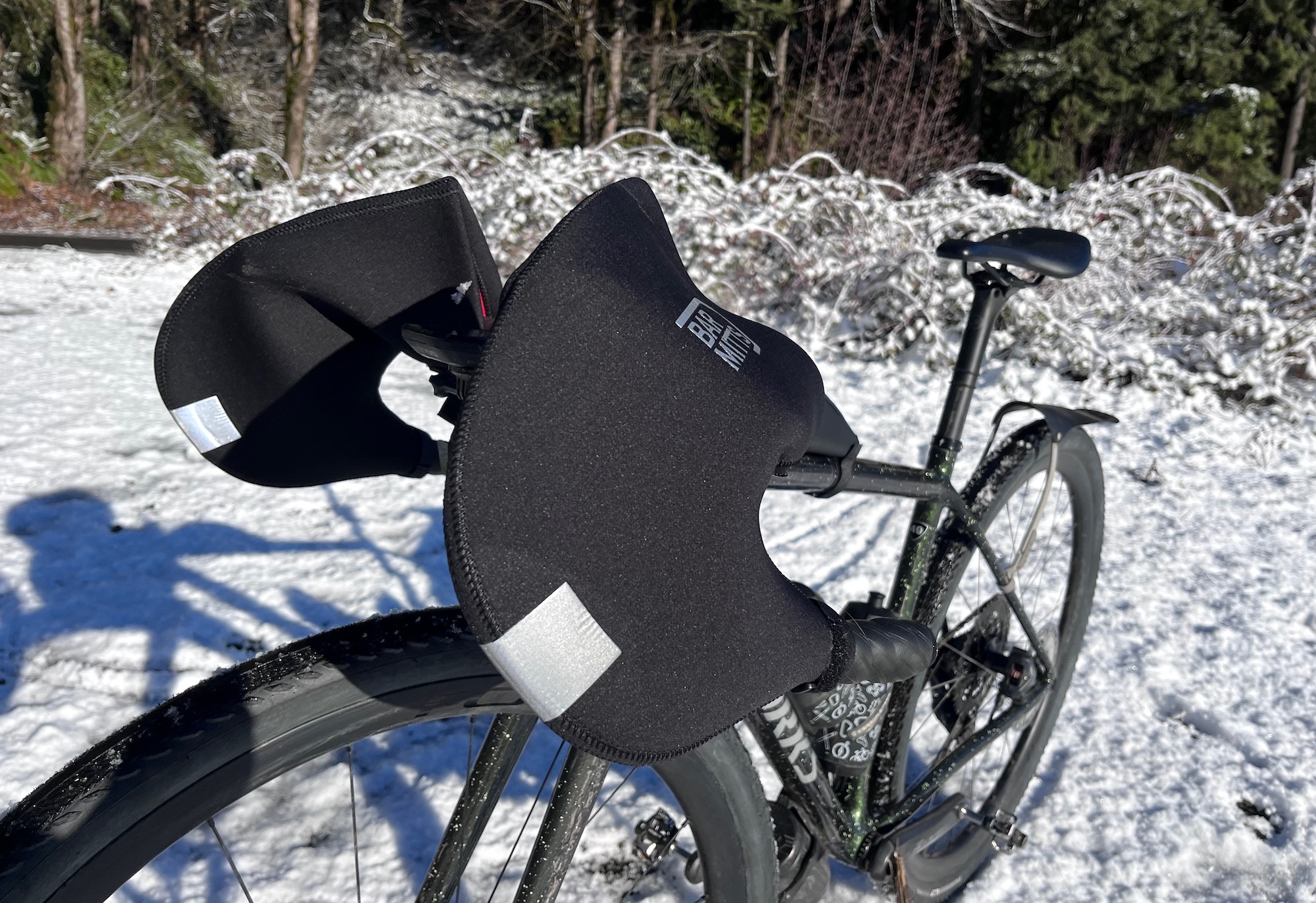
It’s almost maddening how simply effective the Bar Mitts are — and why it’s taken me so long to try them. Made of 5mm thick neoprene, the cornucopia-shaped pogies slide over the bar ends, enclosing the brake levers and hoods, and attach to your bars using an integrated velcro strap.
The mittens remain upright and open so you can slide your hands in and out of them, and have space to shift and brake.
The latest race content, interviews, features, reviews and expert buying guides, direct to your inbox!
Installing the Bar Mitts was straightforward and quick, and armed with my new cold weather shield, I set out to test them during another winter gravel adventure in sub-freezing temperatures.
The roads were icy but rideable on gravel tires, and I knew we’d soon be warming up as the roads turned up. And warm up I did! Inside the Bar Mitts, I had started out with mid-level gloves — ones I usually wear in 40- to 55-degree weather. And even these soon came off on the long, sustained climb. Tucked inside the Bar Mitts, protected from wind chill, my hands warmed up to the point where I could go gloveless — as long as we kept climbing and I kept my hands inside the mitts. Still, I was impressed.
It wasn’t long before the icy roads turned to snow and then, even more snow. The terrain turned to rolling and we soon were plowing through some four feet of powder, descending as though we were on skis. All the while, my hands — now back in the gloves— were shielded from snow and windchill. The Mitts opening was large enough to quickly move my hands in and out for the various hike-a-bike and slide-down-on-your-butt sections we encountered.
Wanting to ride on the very top of my hoods in an out-of-the-saddle position proved a bit challenging however. The openings of the Bar Mitts don’t extend far enough forward that I can comfortably ride on the top of the hoods. But this is largely due to my choice of a size Small mitten.
Bar Mitts does state on their website that the size XL of the Road Bike Internal Cables model was specifically designed for hydraulic disc brake levers. Yet, I am currently using the smalls because A: I have tiny hands, B: they fit over my SRAM AXS hoods just fine while still allowing full use of the levers and shifters, and C: I figured the smaller the opening, the warmer and more water shielding they’d be.
However, if I wasn’t using electronic shifting, I don’t think the smalls would have enough space for a full shift lever movement. And, as I encountered, the smaller opening does restrict my movement a little bit. I tried the larger mitts and they do indeed offer more freedom of movement but also take up more space, let in a bit more air and are all around bulkier.
Bar Mitts offers sizes Small through XL, so it all comes down to one’s preference, the temperature you’ll be riding in, mechanical vs electronic shifting, and the size of your hands and bulkiness of your gloves.
Value and conclusion
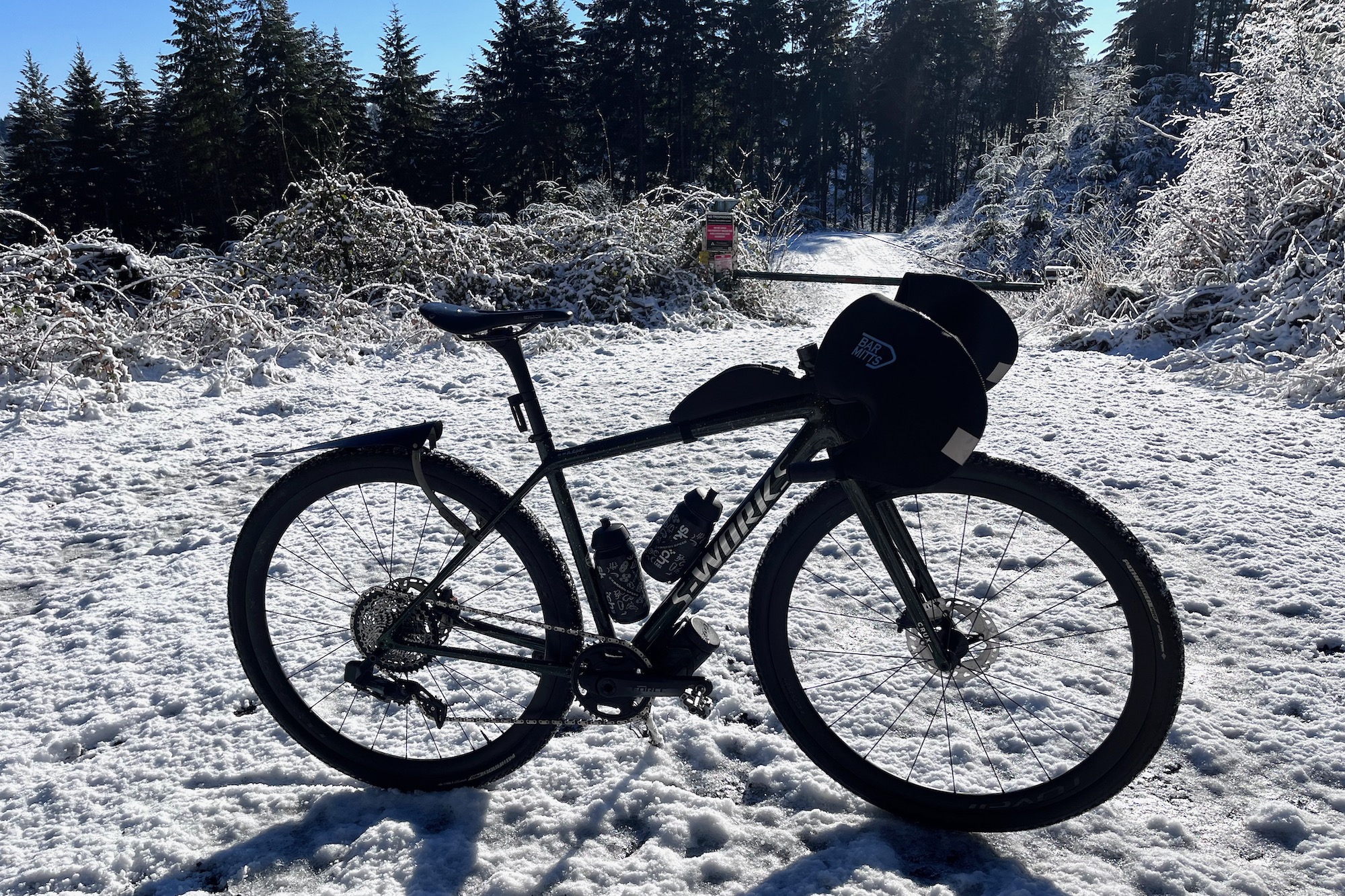

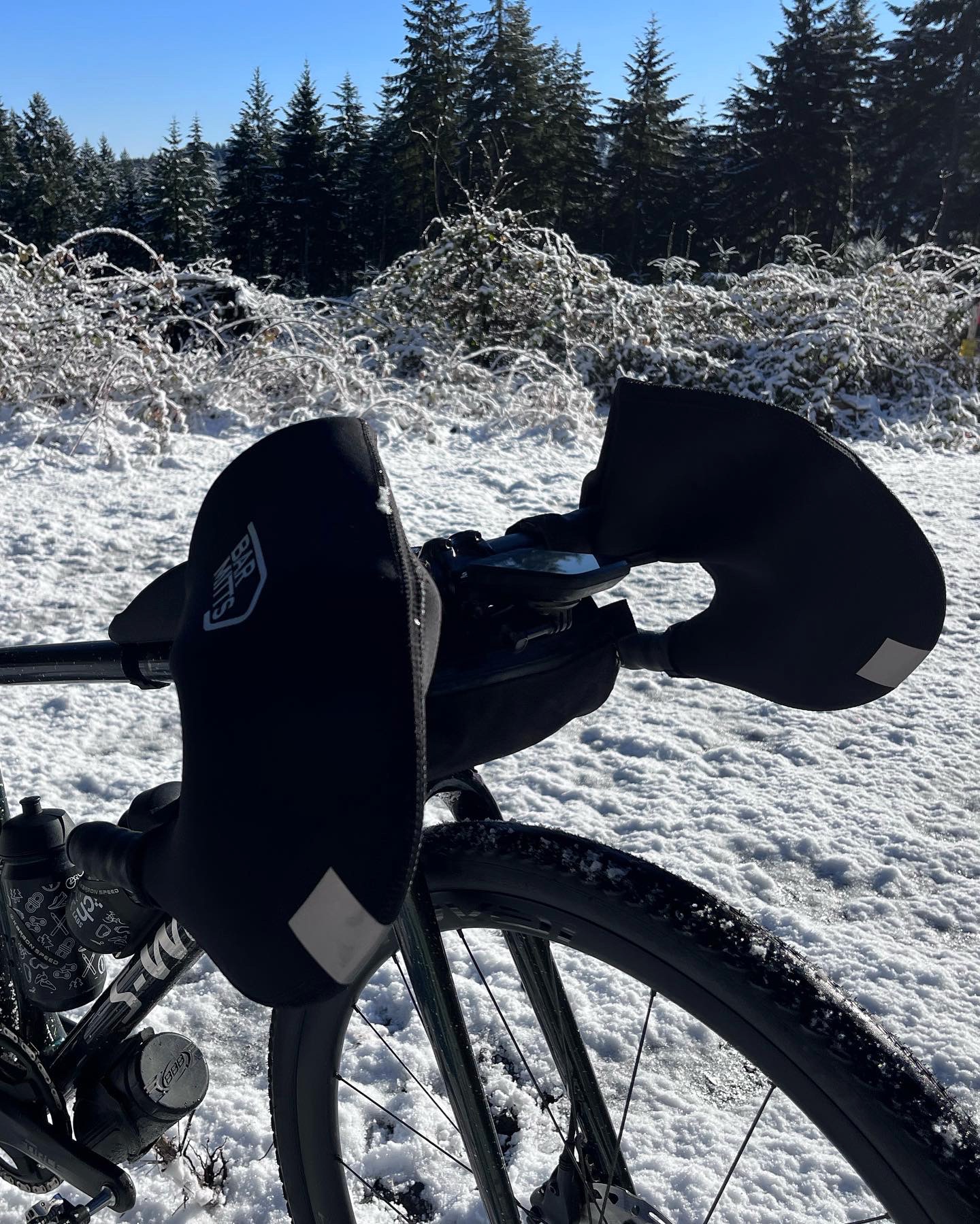
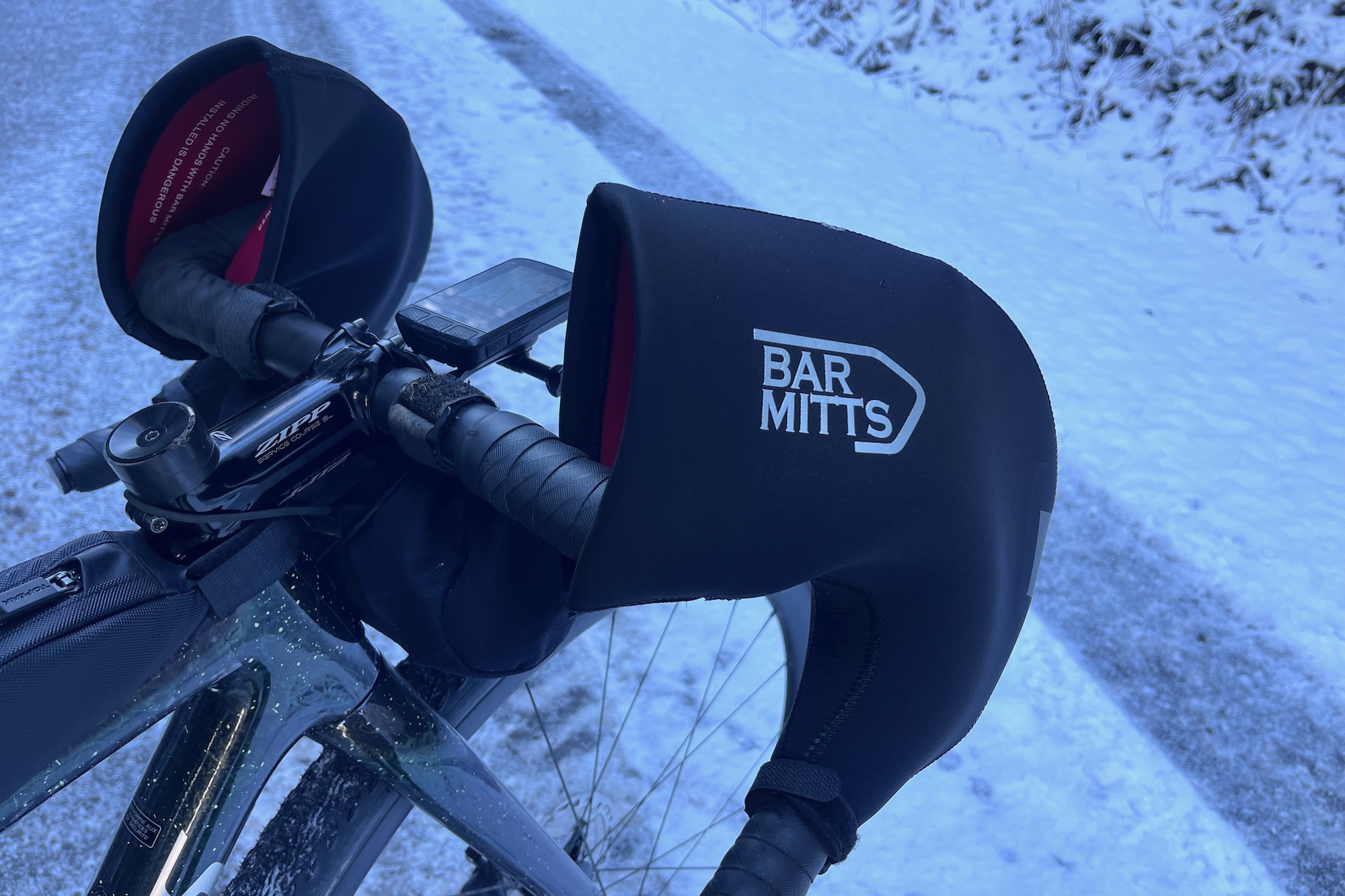
Having to adjust my hand position was a small price to pay for warmth and comfort. I’ve struggled with neuropathy and Raynaud’s symptoms for years and the Bar Mitts shield allowed me to ride in freezing temperatures without pain, numbness or post-ride tears. That, to me, is invaluable and certainly worth the 75 bucks.
All in all, I was thoroughly impressed with the warmth and shelter the Bar Mitts provide and looks be damned, these will surely become a staple for many winter rides to come.
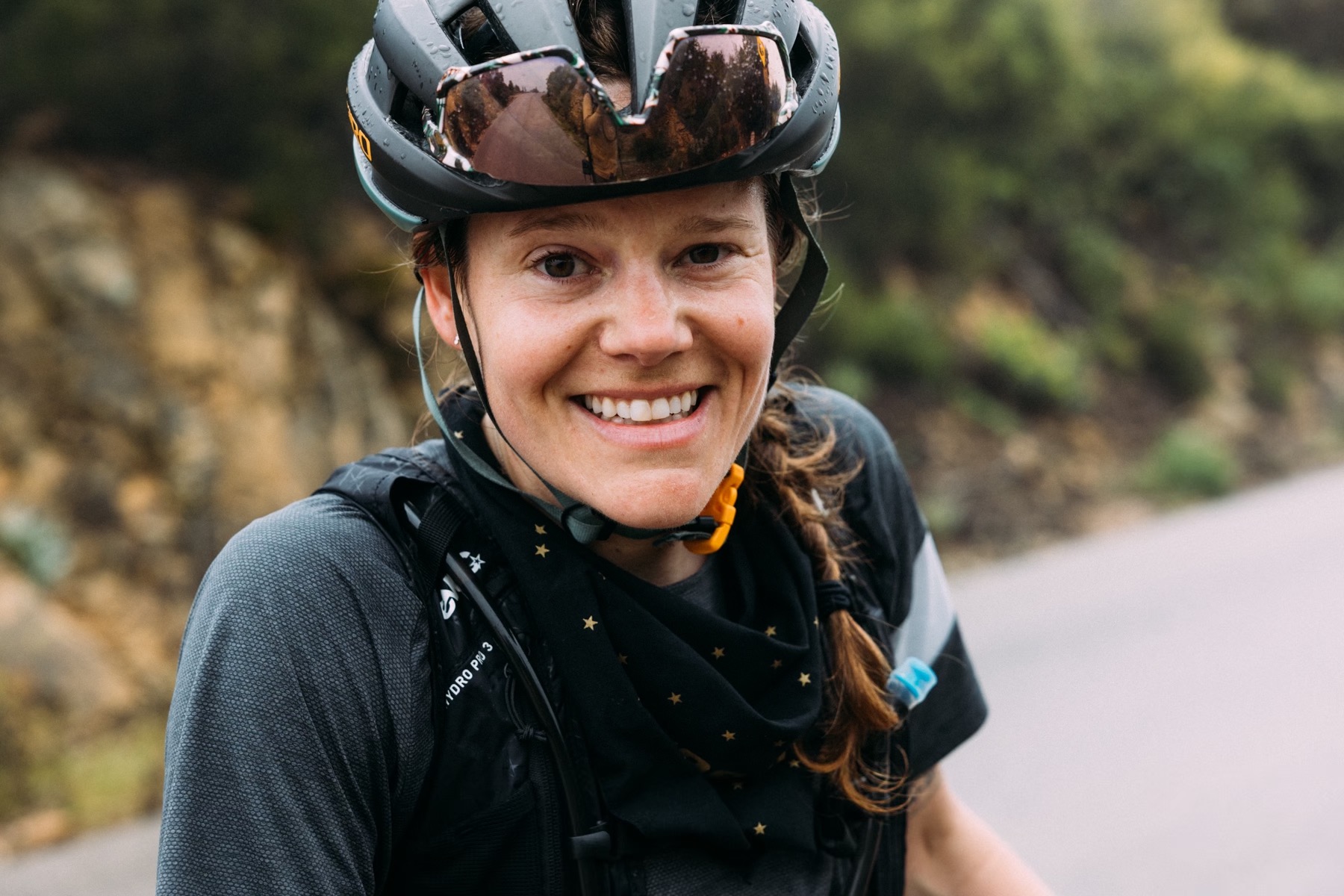
Cycling Weekly's North American Editor, Anne-Marije Rook is old school. She holds a degree in journalism and started out as a newspaper reporter — in print! She can even be seen bringing a pen and notepad to the press conference.
Originally from the Netherlands, she grew up a bike commuter and didn't find bike racing until her early twenties when living in Seattle, Washington. Strengthened by the many miles spent darting around Seattle's hilly streets on a steel single speed, Rook's progression in the sport was a quick one. As she competed at the elite level, her journalism career followed, and soon, she became a full-time cycling journalist. She's now been a journalist for two decades, including 12 years in cycling.